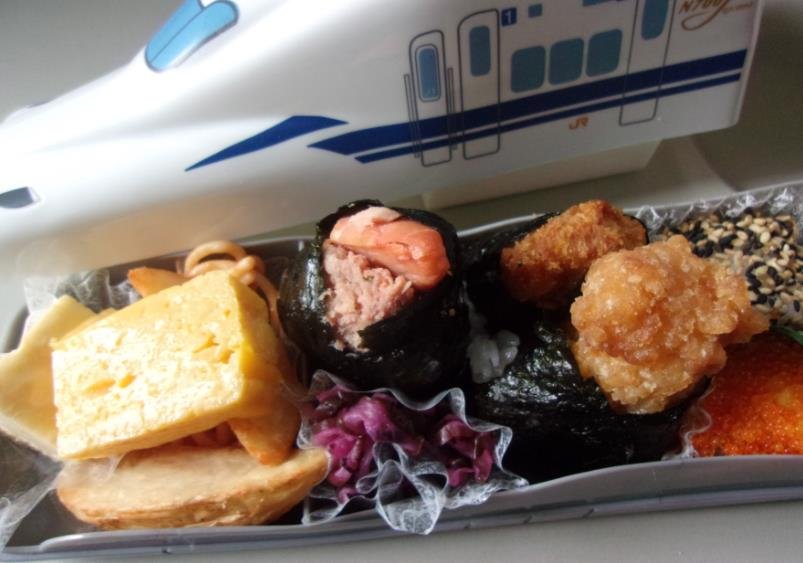Japan’s bullet trains, or shinkansen, are famous for their speed, comfort, and punctuality. But they are also known for their snack carts, which offer a variety of food and drinks to passengers as they travel at speeds of up to 300 km/h. However, the snack carts are becoming a rare sight, as some shinkansen operators have decided to phase them out due to low demand and labor shortage. This has sparked a surge of interest among train enthusiasts and collectors, who are eager to own a piece of shinkansen history.
The snack carts, or trolleys, have been a part of shinkansen service since the first line opened in 1964, ahead of the Tokyo Olympics. They carry more than 60 items, including bento boxes, sandwiches, coffee, beer, and ice cream. The carts are designed to be easy to maneuver and brake, and can hold up to 50 kg of food and drink.

However, the popularity of the snack carts has declined over the years, as more passengers prefer to buy their own food and drinks from station kiosks or convenience stores before boarding. The snack carts also face competition from vending machines installed on some shinkansen platforms and carriages.
In addition, the snack carts require a lot of manpower and training, which is becoming harder to find amid Japan’s aging and shrinking population. The shinkansen operators also have to deal with the logistics and hygiene issues of transporting and storing the food and drink items.
As a result, some shinkansen operators have decided to discontinue the snack cart service on some routes. In June 2023, Central Japan Railway Company (JR Central) stopped the service on the Tokyo-Osaka shinkansen line, which is the busiest and most profitable in the country. In March 2024, West Japan Railway Company (JR West) will follow suit on the Osaka-Hakata shinkansen line, which connects the western regions of Japan.
The craze for shinkansen snack carts
The decision to end the snack cart service has sparked a wave of nostalgia and interest among train lovers and collectors, who want to own a shinkansen snack cart for themselves. The carts have become a coveted item, as they represent a unique and iconic aspect of shinkansen culture and history.
JR Central, which owns about 200 snack carts, decided to sell 50 of them to the public, after receiving many inquiries and requests from train fans. The company set the price at 100,000 yen (about $670) per cart, and accepted online orders from late January to early February 2024.
The response was overwhelming, as the company received 1,942 orders for a total of 2,432 carts, far exceeding the available stock. The company said it would hold a lottery to determine the lucky winners, who will receive their carts in March or April.
The buyers of the snack carts include not only train buffs, but also schools, restaurants, and households, who plan to use the carts for various purposes, such as serving lunch, displaying souvenirs, or decorating their kitchens. Some buyers said they wanted to preserve the carts as a memory of their shinkansen trips, while others said they wanted to enjoy the carts with their children or grandchildren.
JR West, which also owns about 200 snack carts, said it would consider selling some of them to the public, depending on the demand and the condition of the carts.
The legacy of shinkansen snack carts
The shinkansen snack carts may be disappearing from the rails, but they will not be forgotten by the millions of passengers who have enjoyed their service over the decades. The snack carts have been a part of the shinkansen experience, offering not only food and drinks, but also a friendly and personal touch to the high-speed and high-tech trains.
The snack carts have also been a source of innovation and creativity, as they have adapted to the changing tastes and preferences of the passengers. For example, the snack carts have introduced regional specialties, such as Nagoya’s miso katsu sandwich, Kyoto’s yatsuhashi sweets, and Hiroshima’s momiji manju cakes. They have also offered seasonal and limited-edition items, such as cherry blossom bento, Halloween pumpkin pie, and Christmas cake.
One of the most famous and beloved items on the snack carts is the “Super-Cold Shinkansen Ice Cream”, which is frozen with dry ice and served with a wooden spoon. The ice cream is so hard that some passengers use a hot coffee cup to soften it, or wait until the end of their journey to eat it. The ice cream, which comes in vanilla, chocolate, and strawberry flavors, has been a staple on the snack carts since 1975, and has sold more than 300 million units.
The shinkansen snack carts may be on their way out, but they will leave behind a legacy of service, satisfaction, and smiles for the shinkansen passengers and staff.
















